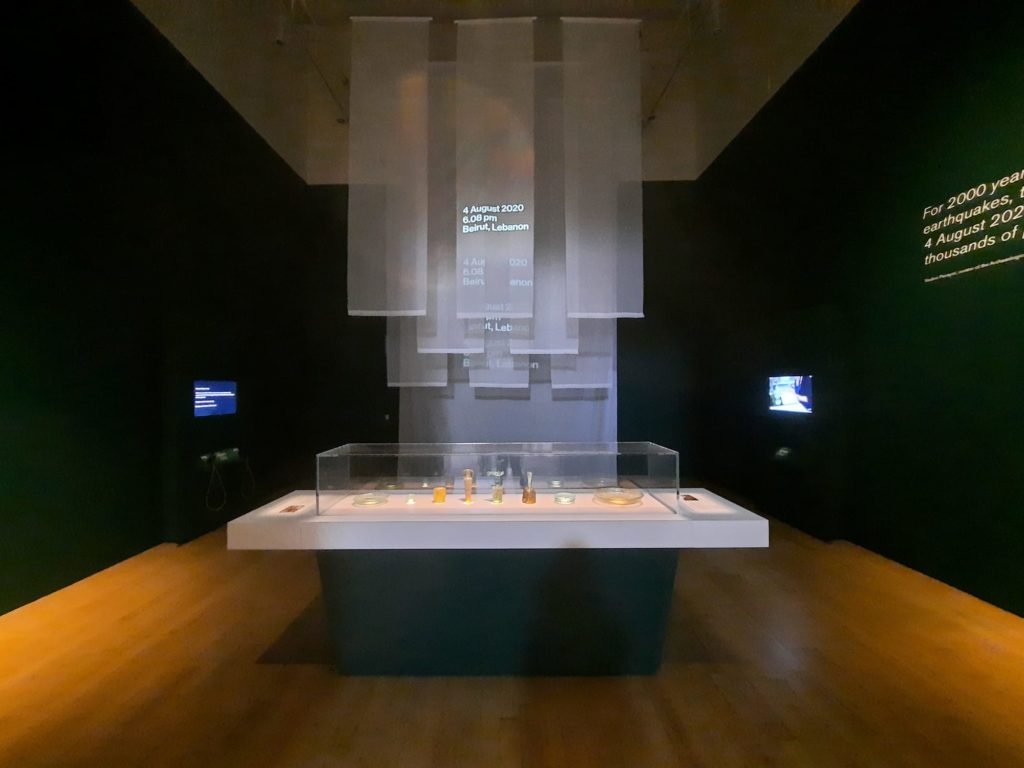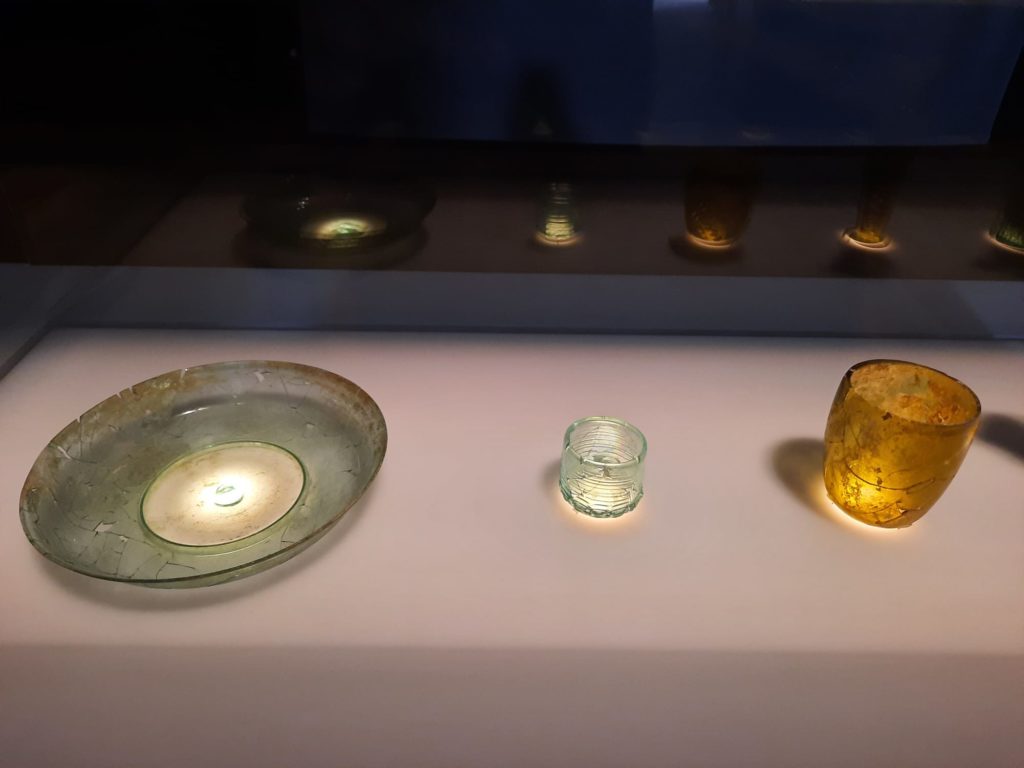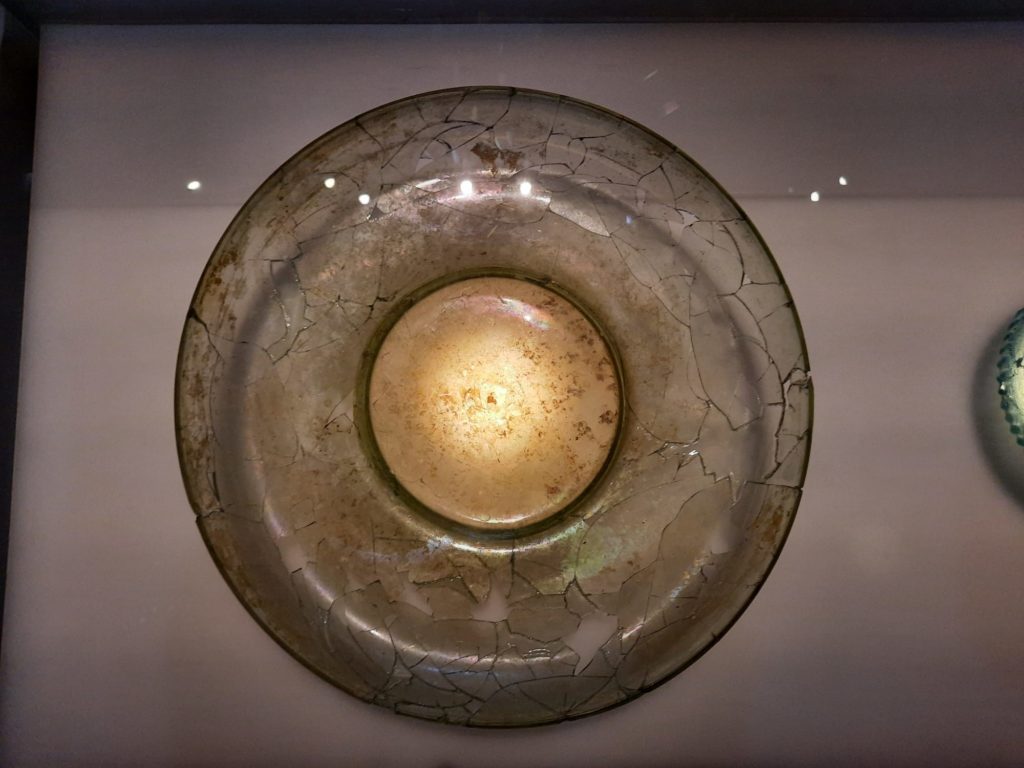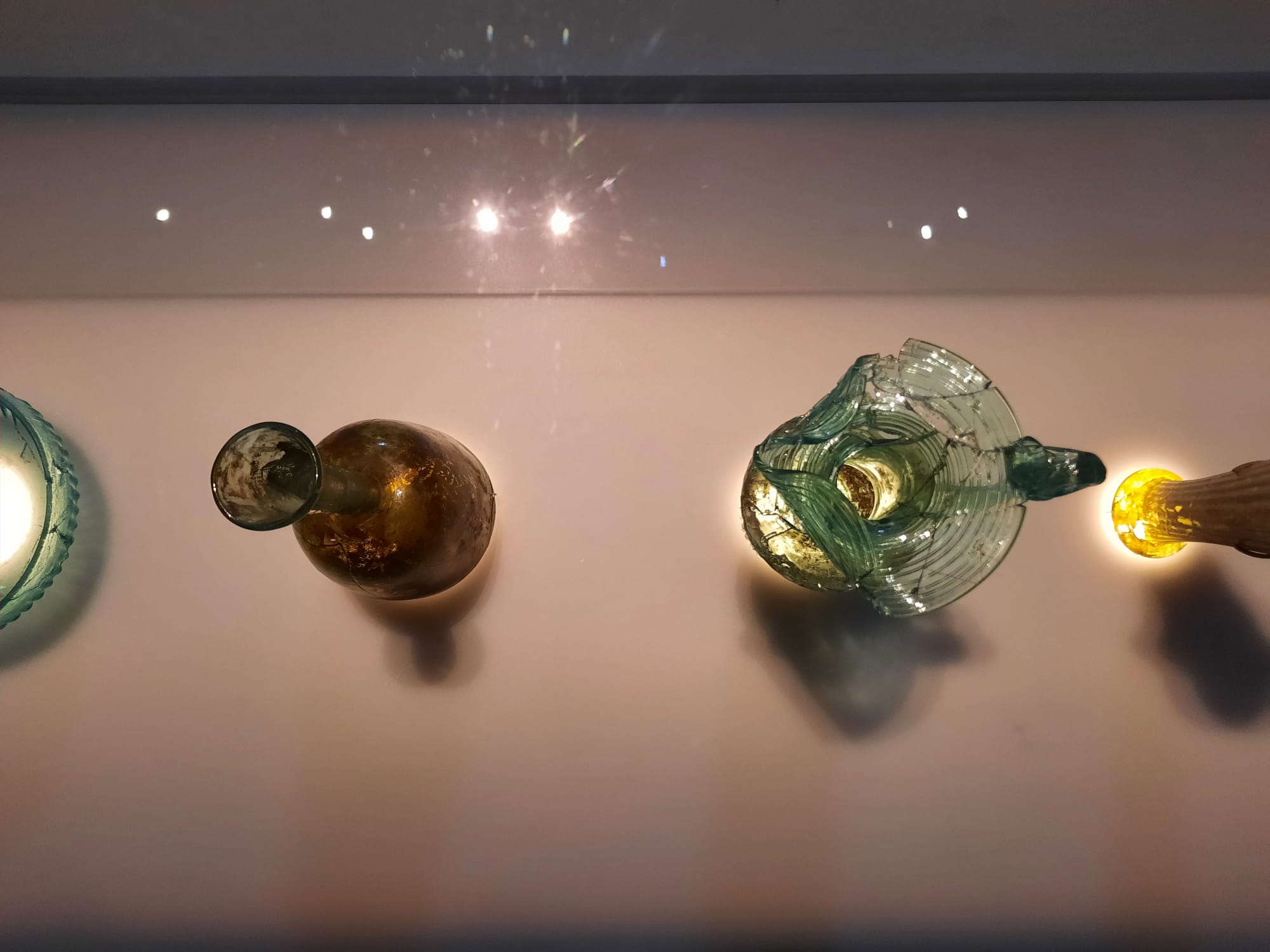Shattered Glass Of Beirut – British Museum, London
A small, free exhibition, Shattered Glass of Beirut shines a light on a small story of hope from a catastrophic event.

Shattered Glass of Beirut
I’ve reviewed one room exhibitions at the National Gallery a number of times (see here, here or here), but never at the British Museum. And yet this is another museum which frequently has small, free displays on niche topics. I had read about the one I’m reviewing today and really wanted to see it, so made time to pop in between Open House activities a couple of weeks ago.
The exhibition is the result of a joint venture forged in the worst circumstances. I’m sure most of my readers recall the explosion which took place in Beirut on 4 August 2020. Some poorly stored ammonium nitrate, confiscated years earlier by the Lebanese authorities, caused a blast which registered 3.3 on the Richter scale. It was one of the largest accidental man-made explosions ever to occur. The shock wave tore through Beirut’s port area and beyond, causing over 200 deaths and 7,000 injuries.
In the aftermath, as well as mass protests at the apparent corruption and mismanagement that had allowed the situation to occur, the international community responded. As well as humanitarian aid, specialist skills and knowledge were often needed. And although it does not compare to human life, cultural heritage also suffered from the explosion. This small exhibition at the British Museum tells one small story of international cooperation and salvaging something from this terrible tragedy.


Rebuilding Something Whole From Fragments
When the explosion’s shock wave hit Beirut, about 3km away at the Archaeological Museum at the American University of Beirut it caused a glass display case to topple over. This case contained 74 early glass vessels. Shards of modern glass shelves mingled with Roman and Byzantine glass. For museum staff, it was devastating. Glimmers of hope, or at least of solidarity, began to appear as phone calls trickled in from international colleagues. One was from the British Museum, offering assistance. A plan to salvage and restore a number of vessels emerged, with the further cooperation of the Institut National du Patrimoine in Paris.
Experts including conservators began to sift through the untold numbers of shards. They were looking to match pieces from the same objects, and assess which could be restored. The British Museum-led team selected eight, and transported the fragments carefully back to London. Slowly and carefully, the vessels were conserved using the latest techniques. There was a deliberate choice early on to make the repairs visible. This is in line with current perspectives on conservation. But it is also a choice about the story these objects will tell.
After the exhibition at the British Museum, the eight vessels will travel back to Beirut. To date, 18 more of the 74 in the original case have been restored as part of an emergency recovery campaign. It’s a powerful story of a common humanity, a helping hand of assistance, knowledge, funds, support which played out in a myriad of different ways across Beirut in the aftermath of the explosion.


The Object As Data Carrier, The Object As Witness
It was actually in one of those small National Gallery exhibitions that I first started talking about the concept of the object as data carrier, which I learned during my museological studies at the Reinwardt Academy from Peter van Mensch. It’s about the meanings an object carries: it’s existence as a material object, the purpose behind its creation, and the additional meanings it has gathered over time. For me Shattered Glass of Beirut encapsulates this theory perfectly. These glass vessels will continue to tell us about early glass techniques and life in Roman or Byzantine Lebanon. All those stories about trade and their archaeological discovery still exist. But they also now have an important new meaning, inscribed on them on 4 August 2020. They have become witnesses to devastation rooted in corruption and neglect. And bear on themselves the marks of careful restoration to ‘wholeness’. A whole host of new metadata now affixed to these eight vessels.
As exhibitions go, Shattered Glass of Beirut is very simple. As mentioned before, it’s just one room. The light is low, so that spotlights pick up the visible breaks in the vessels. A couple of videos play and there are some wall texts, but mainly the objects speak for themselves. Footage from the blast projects onto soft white textiles hanging from the ceiling. You only need spend a couple of minutes in this quiet gallery right by the main entrance.
For those who won’t make it to the British Museum before the exhibition ends, you can see the videos here. As a story in miniature of the events of the Beirut explosion I found it very effective. And the international nature of the cooperation has benefited me in the sense that I could see a selection of the vessels up close and in person. But I’m glad they will be travelling home soon.
Salterton Arts Review’s rating: 3.5/5
Shattered Glass of Beirut on until 23 October 2022
If you see this after your page is loaded completely, leafletJS files are missing.


It’s such a sad story of human suffering and cultural destruction. These old, old objects are beyond valuable and it must have devastated the museum staff who cared for them. While the collaborative restoration illustrates the best of humanity, the dark side of man haunts it.
I found it quite emotional seeing the museum curator in the video talking about coming into work after the explosion and fearing the worst. There must be such a sense of guardianship caring for these objects that have survived millennia, and then to see them all smashed in an instant – heartbreaking.